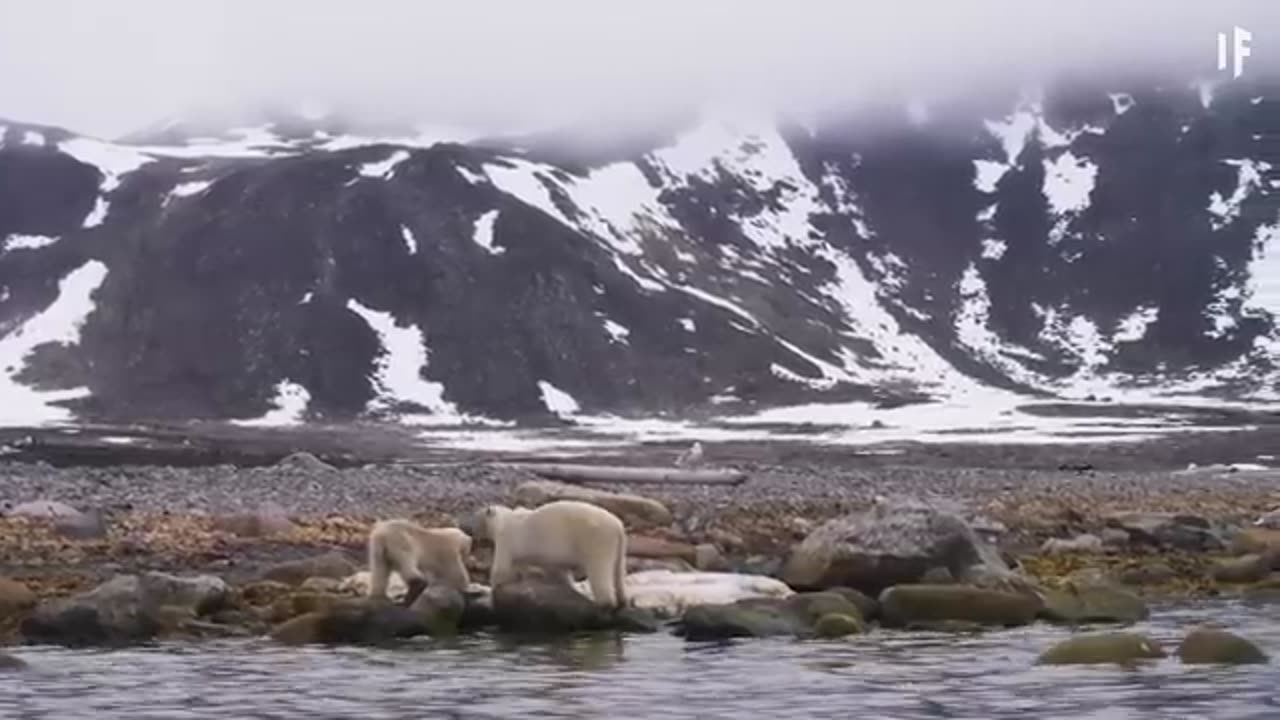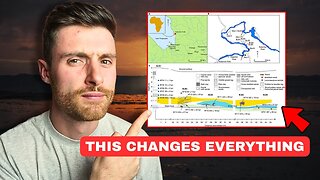Premium Only Content

Earth's Evolution in 10 Minutes
Here’s a 10-minute summary of Earth’s incredible 4.5 billion-year evolution, highlighting its major geological, biological, and atmospheric transformations:
1. Formation of Earth (4.5 billion years ago)
Earth formed from a hot, spinning cloud of gas and dust that coalesced around the young Sun. As particles collided and fused, a small planet gradually formed, with heavy elements like iron sinking to form its core and lighter elements rising to form its crust and mantle.
The young Earth was incredibly hot, with volcanic eruptions, constant meteor impacts, and a toxic atmosphere.
2. The Moon Forms (~4.5 billion years ago)
Shortly after Earth formed, a Mars-sized object (Theia) collided with it, ejecting debris into space. This debris coalesced to form the Moon, which has influenced Earth’s tides and stabilized its axial tilt, helping regulate the climate.
3. Cooling and Formation of the Crust (~4.4 billion years ago)
Earth’s surface began to cool, and a solid crust formed. Water vapor condensed as the planet cooled, creating the first oceans. This early Earth was hostile, but it set the stage for future life by introducing water, a crucial ingredient for life as we know it.
4. The First Atmosphere (~4 billion years ago)
Early Earth’s atmosphere was filled with gases from volcanic eruptions, primarily carbon dioxide, methane, ammonia, and water vapor. This atmosphere lacked oxygen, making it hostile to modern life but creating a greenhouse effect that kept the Earth warm.
5. Life Emerges (~3.8 billion years ago)
Simple, single-celled organisms (prokaryotes) appeared in the oceans. These early forms of life are thought to have originated near hydrothermal vents or shallow, mineral-rich ponds.
These microbes survived in extreme conditions and began the process of evolution, giving rise to diverse forms of bacteria and archaea.
6. Photosynthesis and the Oxygenation Event (~2.5 billion years ago)
Cyanobacteria, a type of photosynthetic bacteria, evolved and began producing oxygen as a byproduct. This led to the Great Oxidation Event (~2.4 billion years ago), dramatically altering Earth’s atmosphere by adding oxygen, which was toxic to many early anaerobic organisms.
Oxygen paved the way for aerobic life and complex cellular structures.
7. The First Complex Cells (Eukaryotes) (~2 billion years ago)
Eukaryotes, complex cells with nuclei, evolved and began diversifying. These cells were larger and could use oxygen more efficiently, allowing for greater energy production and complexity.
This milestone set the foundation for the eventual development of multicellular organisms.
8. Snowball Earth (~700 million years ago)
Earth experienced extreme ice ages, with glaciers reaching the equator. Known as “Snowball Earth,” this period almost halted life, but some organisms survived in isolated pockets of water.
These ice ages likely triggered environmental changes that promoted the evolution of complex life forms.
9. The Cambrian Explosion (~540 million years ago)
Life rapidly diversified during the Cambrian Explosion, with most major animal phyla appearing within a few million years. Complex organisms, including the first vertebrates and recognizable ancestors of modern animals, evolved.
This period saw the formation of shells and exoskeletons, which left a rich fossil record.
10. Plants Colonize Land (~470 million years ago)
Simple plants and fungi began to colonize land, stabilizing soil and creating the first terrestrial ecosystems. As plants grew and diversified, they released more oxygen into the atmosphere and sequestered carbon dioxide, which helped moderate the climate.
-
 LIVE
LIVE
Candace Show Podcast
1 hour agoEXCLUSIVE! Brigitte Macron's Lawyer Has A Dark Past. Dan Bongino Speaks Out. | Candace Ep 220
4,161 watching -
 1:18:11
1:18:11
Redacted News
57 minutes agoScotland is being DESTROYED and Neil Oliver is trying to save it
2.08K4 -
 13:16
13:16
Michael Button
6 hours agoWhat If We’re NOT the First Smart Humans?
113 -
 LIVE
LIVE
LFA TV
21 hours agoLFA TV ALL DAY STREAM - MONDAY 7/28/25
1,584 watching -
 UPCOMING
UPCOMING
freecastle
5 hours agoTAKE UP YOUR CROSS- STOP the Hate From State to State!
871 -
 1:11:04
1:11:04
vivafrei
2 hours agoWhat Did Bongino See? The Epstein "Privilege"! Canada Has Become a Dangerous JOKE & MORE!
77.3K48 -
 2:07:48
2:07:48
The Quartering
4 hours agoToday's Breaking News With Josie The Red Headed Libertarian, Hannah Claire & Luke Rodkowski
111K24 -
 LIVE
LIVE
Akademiks
3 hours agoDrake Tries for another #1?? Kodak vs YB still? Ksoo gets snitched on. Doechii plz stop botting
1,162 watching -
 LIVE
LIVE
The HotSeat
1 hour agoHate Crimes In Cincy + Hiring A White Girl Makes You A NAZI?!?!
699 watching -
 25:24
25:24
Stephen Gardner
1 hour ago🔥 RFK Just SHUT DOWN a DISTURBING Problem!
9.35K9